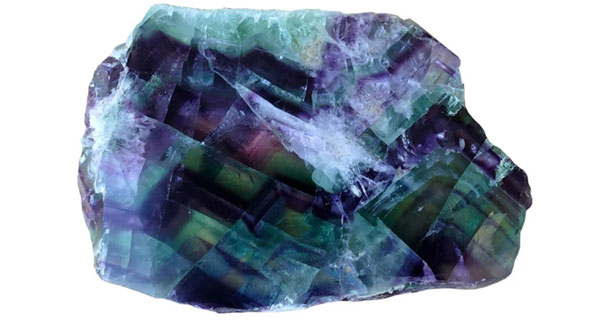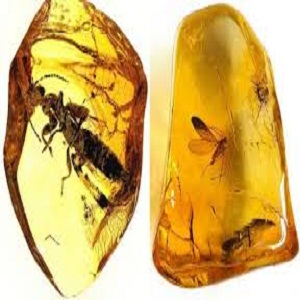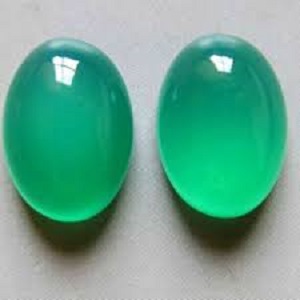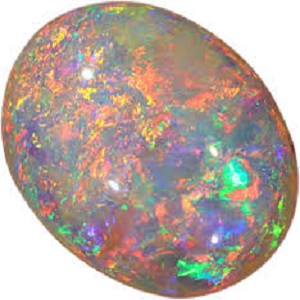What are the mineralogical properties of fluorite

Fluorite is a mineral with almost low hardness that is chemically a combination of fluorine (F) with elements such as P, Na, Ca and As. However, in terms of mineralogy, fluorite with the formula CaF2 is the most important fluorine compound in nature. This stone was first mentioned in 1530 as “fluorspar”. Today, the name fluorescein is used in the industrial and chemical form of fluorite, while the word fluorite is used in precious and mineral stones. According to the information in the table below, you will probably not have a problem in detecting the original fluorite
Fluorite properties table
Chemical composition of CaF2 – Calcium fluoride
Colorless color, all colors
White khaki color
Transparency is transparent to opaque
Complete clearance
Polished glass to pearl
Light refractive index 1.434
Mouse Hardness 4
Specific weight 3.25 – 3
Crystal system
Cube, octagonal
Fluorescence is usually strong, bluish-purple
This stone is found transparent to opaque. Fluorite has an isometric, cubic and octagonal crystal structure, which in its crystalline form tends to form octahedral when formed with high temperature fluids and cubic crystals at low temperature. It is interesting to know that fluorite is one of the few common minerals that has a complete clearance from four directions
Types of fluorite paints

Allochromatic rock fluorite with very small amounts of mineral impurities inside its crystalline structure can change the color of this mineral. Pure fluorite is colorless and its colors are due to the types of impurities inside it. For example, some manganese ions can change color to orange. For this reason, less rock can be found in nature with such a variety of colors, and after the large family of quartz, fluorite is in second place in this regard
Fluorite can be found in common colors such as blue, green, purple and in rare cases in red, black, white, brown and pink, among which the weak to strong fluorescence phenomenon can give amazing colors of them, especially in cubic types. It created. One of the most popular types of fluorite paints is purple or purple (due to its fluoride ions with a cubic structure that is kept as a collection
Investigation of fluorescence phenomenon in this mineral

In 1852, Sir George Gabriel Stokes, the first British mathematician and physicist, after discovering the ability of water to glow in fluorite in different light spectra, named it “fluorescence” and fluorite became the first mineral with fluorescence. Was named. In many cases, fluorite rocks show fluorescence under ultraviolet (UV) light
The presence of the trace element yttrium, europium, samarium or other natural impurities in the crystal structure of fluorite is due to its fluorescence properties. The color of the visible light emitted by fluorite during fluorescence strongly depends on where it is extracted. The type of fluorescent color can vary, but is generally blue-purple, but can sometimes include colors such as yellow, red, black, white, green, and purple. Depending on the short or long UV wavelength, this mineral can show different fluorescent colors
Fluorine; Wrong name for fluorite

In a number of websites or social networks, you can see that instead of fluorite, it is called fluorine! . If fluorine or fluorine is a toxic element with the symbol F and atomic number 9, which is used from toothpaste to the nuclear industry! Many scientists have probably lost their lives or been poisoned by working with fluorine
In fact, fluorine is the constituent element of fluorite, which was named exactly after the study of fluorite. There are two other examples of the same name: Fluorene and fluoride that should not be confused. It is interesting to know that there are several brands of this mineral in the jewelry market, which are
Antozonite (with cracks or cleavage), Blue John (bandy and purple-white from the UK), Chlorophane (light blue-green for heat species), Yttrocerite (a type in which a little yttrium and samarium have replaced calcium in its chemical composition) ) Yttrofluorite (a type in which yttrium has incompletely replaced calcium in its chemical structure)
In which areas is fluorite found
Fluorite is a common mineral that is mostly found in the form of veins in large and small deposits in many areas and can be found next to limestone or dolomite. These veins can also include tin sulfide, zinc, lead, silver and other metals. In different geological environments, fluorite has different geochemical patterns that indicate the type of deposit and host rock
Fluorite precipitated during the final stages of magmatic crystallization and is often found in hydrothermal environments with normal extinction. Minerals most commonly transported and deposited with fluorite include sphalerite, galena, barite, calcite, and quartz.
According to the latest deposit classification systems, fluorite deposits have three magmatic origins, related to structural and sedimentary activities. The most important magmatic-hydrothermal factors controlling mineralization in fluorite deposits include dynamic geo-position, fluid chemistry, mineralogy and alteration complex, role of host rock, geothermal slope, amount of fluid volatiles, depth and time
Fluorite reserves and mines in Iran and the world

So far, more than 30 fluorite deposits and exploration areas have been identified in Iran, which have a total reserve of 1.35 million tons, equivalent to 0.6% of the world’s fluorite reserves. In Iran, most fluorite reserves are hydrothermal (or, according to some, sedimentary-diagenetic) and are located in the north of the Tabas block, Central Alborz, or on the edge of Central Iran
Most of these deposits are located in Khorasan, Mazandaran, Isfahan, Kurdistan, Markazi, Yazd, Semnan and Kerman provinces. These deposits include Kamar Mehdi Fluorite mineral deposits in the southwest of Tabas, Pinavand in the northeast of Isfahan, Bozijan in the west of Mahallat, and Savadkuh fluorite belt in the south of Ghaemshahr and Atashkooh barite fluorite-deposit in the south of Delijan
Fluorite in Iran is mostly reported as a mineral with metal deposits such as lead and zinc and also in pegmatite igneous masses in the form of vein or with barite and coal deposits. The location of some active Iranian fluorite deposits is shown in the figure. China (the largest), Mexico, Argentina, Australia, Burma, Morocco, the United States, Germany, France, Canada, the United Kingdom, Namibia, Russia, Switzerland and Spain are among the world’s most important fluorite reserves
Improvement
Fluorite is not usually improved. However, some sellers improve the polish of this stone by improving it with oil. Fluorite can also be improved by heating, which removes harmful hydrocarbons. Also, sometimes this stone is exposed to gamma rays to achieve different colors, including neon. Due to the low hardness of fluorite, it is sometimes used in coated or impregnated jewelry. Artificial and synthetic fluorites are also available in a variety of colors
Uses of fluorite in jewelry to industry

Fluorite stone is rarely used as a gemstone in the ring and is mostly used as a calcite (especially its transparent type), sculpture, rosary, medal and.. Due to the low hardness when using this stone as a jewel, you should be careful not to wear it because it easily scratches on it. This mineral is also used in ceramic, metallurgical and chemical industries
This mineral, which is known in the industry under the brand name of Fluoraspar, is currently used in three important industrial branches: metallurgical industries (as a smelter), chemical industries (in the production (HF) and in the ceramic and glass industries (in the production of opal glass). Fluorite is found either as a by-product in many lead and zinc deposits or as a major mineral in hydrothermal, pegmatite, or sedimentary deposits




